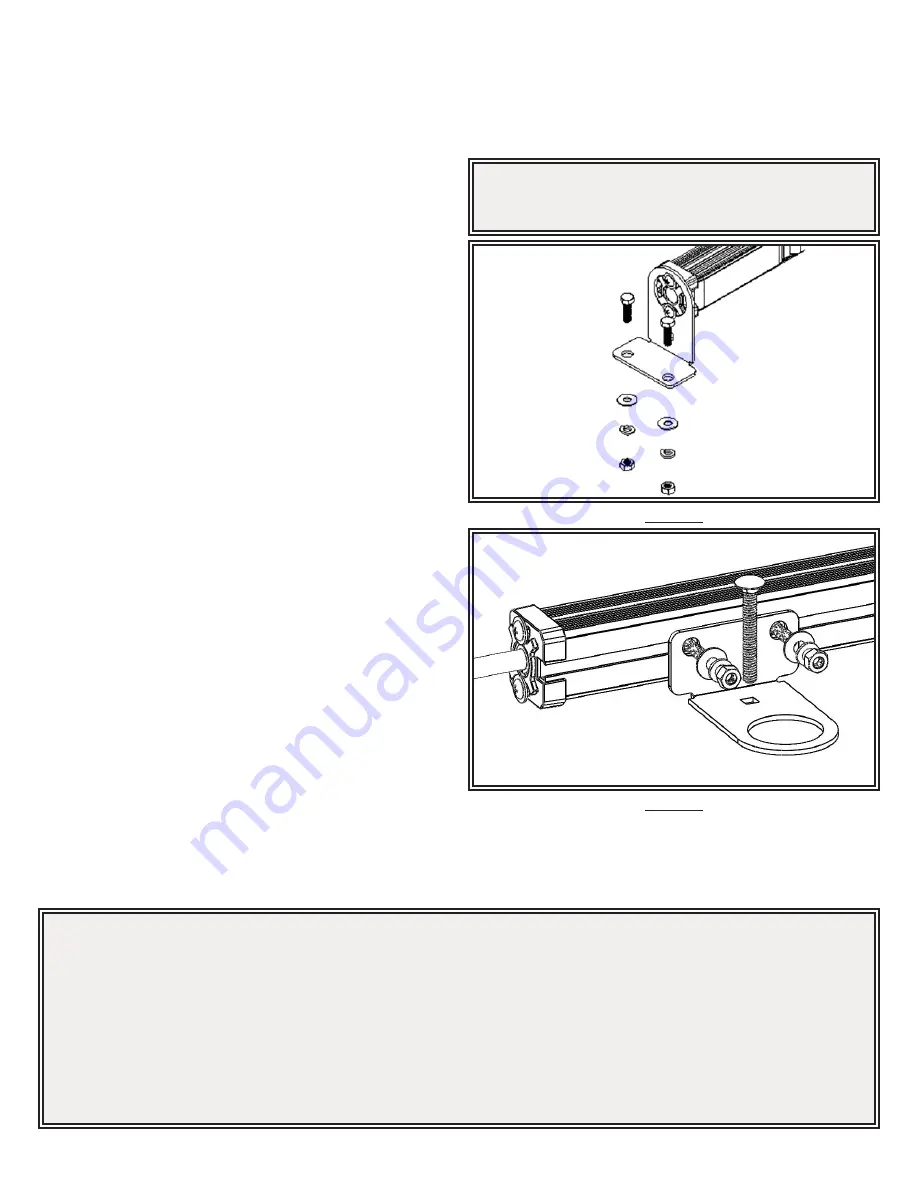
Page 2 of 8
Carefully remove the unit from its packaging and place it on a flat surface. Examine the unit for transit damage. If damage is found, return the
product to your local dealer for warranty replacement. Do not use damaged or broken parts.
Before attempting to connect the unit’s wiring harness, refer to the wiring diagram in FIGURE 3. The wiring diagram describes the function for
each wire.
Notes:
1. Larger wires and tight connections will provide longer service life for components. For high current wires it is highly recommended
that terminal blocks or soldered connections be used with shrink tubing to protect the connections. Do not use insulation displacement
connectors (e.g., 3M Scotchlock type connectors).
2. Route wiring using grommets and sealant when passing through compartment walls. Minimize the number of splices to reduce voltage
drop. All wiring should conform to the minimum wire size and other recommendations of the manufacturer and be protected from moving
parts and hot surfaces. Looms, grommets, cable ties, and similar installation hardware should be used to anchor and protect all wiring.
3.
Fuses or circuit breakers should be located as close to the power takeoff points as possible and properly sized to protect the wiring and
devices.
4. Particular attention should be paid to the location and method of making electrical connections and splices to protect these points from
corrosion and loss of conductivity.
5. Ground termination should only be made to substantial chassis components, preferably directly to the vehicle battery.
6. Circuit breakers are very sensitive to high temperatures and will “false trip” when mounted in hot environments or operated close to their
capacity.
Figure 1
Unpacking:
Wiring Instructions:
The mounting location should be chosen such that there is maximum
visibility to the oncoming traffic.
Installation and Mounting:
CAUTION!
When drilling into any vehicle surface, make sure that the area is
free from any electrical wires, fuel lines, vehicle upholstery, etc.
that could be damaged.
End Bracket Mounting:
Step 1.
Loosely assemble a mounting bracket to each end of the
unit as shown in FIGURE 1 using the included hardware.
Step 2.
Position the lightbar in the desired mounting location on the
rear of the vehicle with the cable exit to the driver’s side. Mark and
drill two holes for each bracket using 6.6 mm sized drill bit. The holes
are spaced 1.83” apart center to center.
Step 3.
Secure the brackets in place on the vehicle using the
supplied M6 x 1.0 mm hardware. Tilt the face of the unit to an angle
that optimizes visibility to oncoming traffic and tighten the two screws
in each end.
Figure 2
Rear Bracket Mounting:
Step 1.
Loosely assemble the mounting brackets into the rear
channel as shown in FIGURE 2 using the included hardware. Note:
Carriage bolt is customer supplied, use of a stainless steel carriage
bolt is advised to prevent corrosion.
Step 2.
Position the lightbar in the desired mounting location on the
rear of the vehicle with the cable exit to the driver’s side. Mark and
drill a hole to mount each bracket using 17/64” sized drill bit. The
brackets should be spaced a minimum of 1/2 the total length apart,
i.e., 24” apart on a 48” long product.
Step 3.
Secure the brackets in place on the vehicle using customer
supplied 1/4” thread size carriage bolts and associated hardware.
Tighten the nuts holding the brackets to the product.
Содержание Mega thin Stik Series
Страница 6: ...Page 6 of 8 Notes...
Страница 7: ...Page 7 of 8 Notes...








